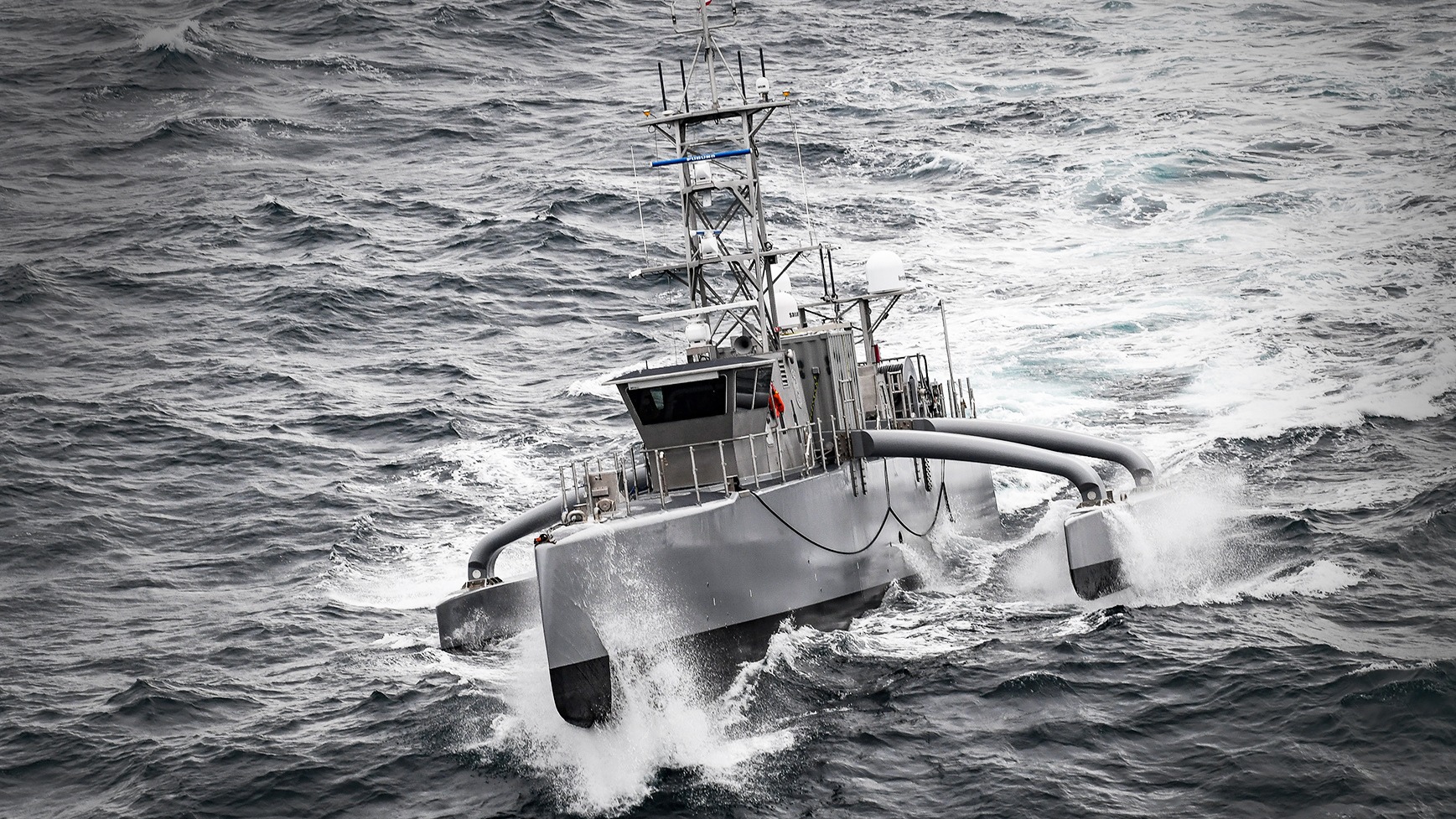Ucrania está empleando gran cantidad y variedad de Sistemas Autónomos Navales (USVs), para hundir buques y destruir aeronaves de combate enemigas desde los primeros meses de la invasión rusa a ese país. Muchas fuerzas navales observan y analizan con atención las plataformas y armas utilizadas, los innovadores modos de empleo por parte de Ucrania, así como las contramedidas defensivas que aplica Rusia para minimizar los efectos de estos ataques. Los analistas de EEUU se preguntan además, si estas enseñanzas resultan válidas para ser aplicadas por la US Navy en apoyo de Taiwán en un futuro conflicto con una potencia como China.
Even though Ukraine does not have much in the way of a navy, it has scored several victories against the Russian military by using drone boats known as unmanned surface vessels, or USVs, providing lessons to the U.S. Navy about the future of naval warfare.
In 2024, explosives-laden Ukrainian USVs sank the Russian missile corvette Ivanovets and the patrol ship Sergey Kotov in the Black Sea. More recently, Ukraine claimed in May that its USVs armed with AIM-9 Sidewinder missiles shot down two Russian Su-30 Flanker fighters.
The question now for the U.S. Navy is how much it can learn from Ukraine about using USVs against an adversary such as China.
The Navy is already looking into the technology’s potential. In 2024, the service delivered its first 24 small uncrewed vessels to its newly established Unmanned Surface Vessel Squadron, and construction of the Navy’s first unmanned ship, USX-1 Defiant, was finished this year, Acting Chief of Naval Operations Adm. James Kilby wrote in his advance testimony to Congress in May.
The United States, along with its allies and partners, should plan to build enough USVs to flood the combat zone in case of war, said James Holmes, the J. C. Wylie Chair of Maritime Strategy at the U.S. Naval War College in Newport, Rhode Island.
Holmes noted that the U.S. Navy has asked the defense industry for proposals to build unmanned vessels that can carry a couple of shipping containers loaded with missiles or sensors before 2027. That is the year by which U.S. officials have warned China could attempt to invade Taiwan.
“To survive, Taiwan needs to keep an invasion fleet from crossing the strait to land troops on the beaches,” Holmes told Task & Purpose. “Unmanned surface and aerial vehicles operating in concert with manned surface missile patrol craft and coastal defense artillery — antiship missiles — is the formula to accomplish that.”
However, retired Navy Capt. Thomas Shugart said the United States needs to be very careful about trying to apply lessons from Ukraine’s naval conflict to a war with China over Taiwan.
For the U.S. military to use short-range unmanned surface vessels against a Chinese invasion force, those vessels would likely need to be deployed to Taiwan before an attack, because China would quickly isolate the island, said Shugart, an adjunct senior fellow with the Center for a New American Security think tank in Washington, D.C.
These drone boats would also have to be widely dispersed, because China would pound Taiwan with missiles before an invasion, Shugart told Task & Purpose
“It’s the kind of thing we should be doing,” Shugart said. “The things that I’m worried about with such an effort is that it needs to be an immense scale because China is not going to come over with just a few dozen ships. They’ll probably use hundreds of ships, including a lot of merchant ships. So, you need a lot of these things in order to make a significant dent in that fleet.”
Those Chinese ships would also be able to see the drone boats coming and launch countermeasures against them, he said.
Shugart added that a fight between the U.S. and Chinese navies in the Pacific would be different from the battle between Ukraine and Russia in the Black Sea.
Still, one of the major lessons that the U.S. Navy can learn from Ukraine about using USVs is the importance of adaptation, said retired Navy Capt. Bradley Martin, a senior policy researcher with the RAND Corporation.
After Ukraine’s initial successes with drone boats, Russia adapted its defenses against them, and that forced the Ukrainians to find new ways to use USVs, Martin told Task & Purpose. The cycle has continued, and each side’s tactics, techniques, and procedures change every few months.
The U.S. military needs to heed Ukraine’s example and look for new roles for drone boats, said Martin, who added that USVs could be fitted with missiles, mines, or guns to sink enemy ships.
“There are a lot of different ways that USVs might be used,” Martin said. “They aren’t just going to be used for swarming attacks — suicide, one-way type of attacks that we’ve seen in Ukraine to a degree. There are probably going to be USV variants that can do a lot of different things — fire missiles, for example. It isn’t just a matter of a platform; it’s what you can put on the platform. And I think we need to learn all those things. And I think Ukraine is providing a good case study for what we should be thinking about.”
Fuente: https://taskandpurpose.com


